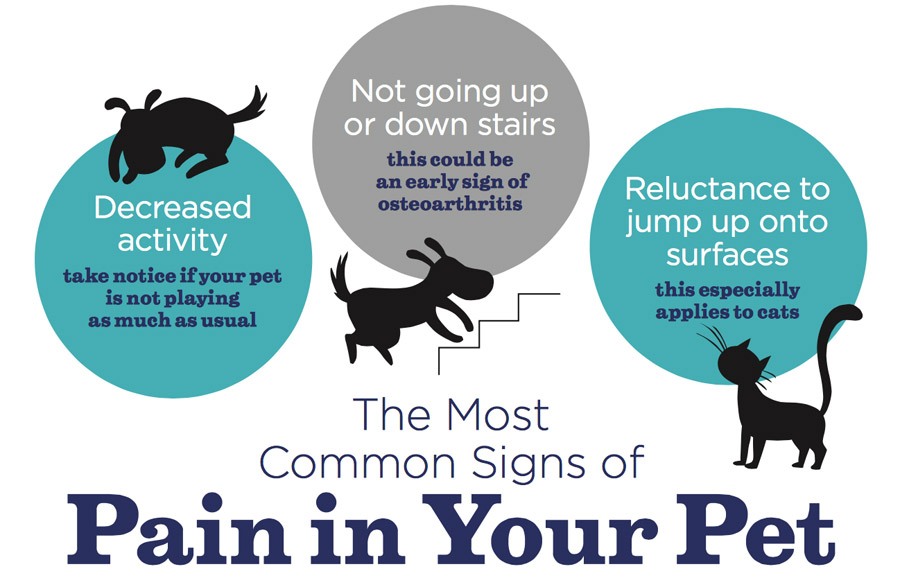September is Animal Pain Awareness Month. Initiated by The International Academy of Pain Management, it raises awareness about animal pain and how it should be managed.
Just like in humans, pain can negatively affect the health and welfare of animals. Indeed, the International Association for the Study of Pain (IASP) defines pain as follows:
“An unpleasant sensory and emotional experience associated with actual or potential tissue damage, or described in terms of such damage.”
Certainly, in regards to humans, we recognise that everyone experiences pain differently. We also accept that only the person in pain can truly understand the level of pain and the degree of intensity.
In fact, over the years much research has gone into understanding children’s pain. Particularly given that younger children might not be able to verbalise their pain, we have sought alternative ways to understand their pain.
For example, healthcare practitioners tend to use the Faces Pain Scale tool as a practical way of assessing a child’s pain. However, animal pain is even harder to measure.
The most common definition of animal pain is that provided by Zimmerman. He defines animal pain as:
“An aversive sensory experience caused by actual or potential injury that elicits protective and vegetative reactions, results in learned behaviour, and may modify species specific behaviour.”
Understanding animal pain
In her article (published in The Conversation) Andrea Nolan, a member of the World Small Animal Global Pain Council, explains that while we know that animals experience physical pain, there’s less certainty around emotional pain.
“The capacity of animals to suffer as sentient creatures is well established and enshrined in law in many countries, however we don’t understand well how they actually experience pain,” says Nolan.
She also states that while there are similarities in how pain in sensed and in pain behaviours across humans and mammals, there are also clear differences.
“Some aspects of the experience and expression of pain are not likely to be the same as in humans. First, animals cannot verbally communicate their pain. Dogs may yelp and you may notice behaviour change but what about your pet rabbit, cat, tortoise or horse?
“Animals rely on human observers to recognise pain and to evaluate its severity and impact. Without the ability to understand soothing words that explain that following surgery to repair a bone fracture, their pain will be managed (hopefully) and will subside, animals may also suffer more when in pain than we do.”
According to Nolan, different species of animal can show their own distinct pain behaviours.
“Dogs may become aggressive, or quiet, or may stop socialising with “their” humans and other dogs. Sheep, on the other hand, may appear largely the same when casually observed,” she says.

Photo by Mike Burke on Unsplash | Image Credit: Well Pet Coach
Evaluating animal pain
Clearly, we need to be able to measure an animal’s pain in order to effectively treat it. In spite of the Glasgow Composite Pain Scale (released in 2007), work continues to develop more pain evaluation instruments. Such instruments take a psychometric approach to ensure greater validity.
Alongside these efforts to establish a multi-dimensional approach to measuring animal pain, there are worldwide efforts to raise awareness of pain in animals.
Importantly, the Global Pain Council (GPC) – an initiative by the World Small Animal Veterinary Association – recognises the need to be able to measure animal’s pain more accurately and effectively.
Indeed, the purpose of the GPC is to eliminate the gap between pain incidence and pain treatment. It believes that while access to pain treatment modalities may differ between countries, the ability to diagnose should not vary.
Pet professionals can visit the GPC website to access helpful guidelines on animal pain management, as well as useful resources.
Obviously it is veterinary practitioners who are at the forefront of treating and managing animal pain, but ALL pet professionals can play a role in educating and informing pet owners about animal pain.

Helping clients to recognise animal pain
By having conversation with your clients about animal pain and the importance of recognising the signs, you can help ensure pain is identified and treated as soon as possible. After all, the sooner pain is addressed the better it is for the animal’s wellbeing and happiness.
To help clients recognise when their dog is in pain, ensure they are aware of the following signs.
Signs a dog is in pain
- Vocal indicators, such as whimpering, yelping, groaning, whining and howling
- Decreased appetite
- Increased/decreased thirst
- Changes to sleeping routine
- Withdrawal from social interactions
- Licking or biting an area of their body
- Flattened ears
- Unusual aggression
Signs a cat is in pain
- Decreased appetite or no interest in food
- Withdrawn or showing an unusual tendency to hide
- Reduced movement or mobility, or hesitation to climb steps or jump
- Diminished exercise tolerance and general activity
- Difficulty getting up, standing, or walking
- Decreased grooming habits
- Changes in urination or defecation habits
- Squinting
- Hunched or tucked-up position instead of curled-up when sleeping
- Abnormal sensitivity or vocalisation to petting or touch
- Changes in usual temperament
Be an advocate for Animal Pain Month
Without a doubt, pet professionals are ideally placed to spread the world about Animal Pain Awareness Month. The IVAPM would love more industry professionals to get involved in raising public awareness about animal pain and pain management.
You can get involved in Animal Pain Month by initiating conversations with your clients about pet pain management. You can also download an animal pain poster to display in your clinic or business. Alternatively, you can share animal pain graphics across your social media accounts.
Unquestionably, every activity, no matter how big or small, helps. So take action today.
Information sources:
Zimmerman, M. “Physiological mechanisms of pain and its treatment”. Klinische Anaesthesiol Intensivether. 1986. 32: 1–19.
Nolan, A. Do animals feel pain like we do? The Conversation. July 7, 2015. Accessed online September 2019.
Vet West Animal Hospital. How can you tell your dog is in pain? Accessed online September 2019.
Latest posts by Liz Walden (see all)
- Pet health: Medicinal cannabis for pets - December 27, 2021
- What pet business insurance do I need? - November 17, 2021
- Pet sitters: how to take time off - November 15, 2021











Leave A Comment